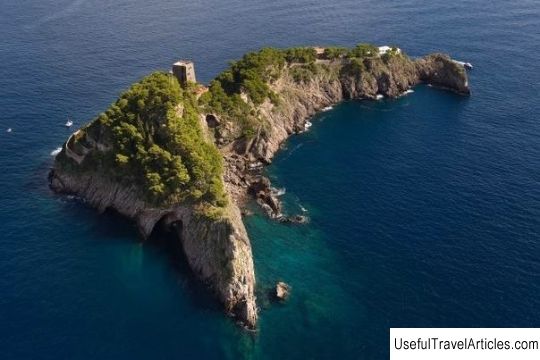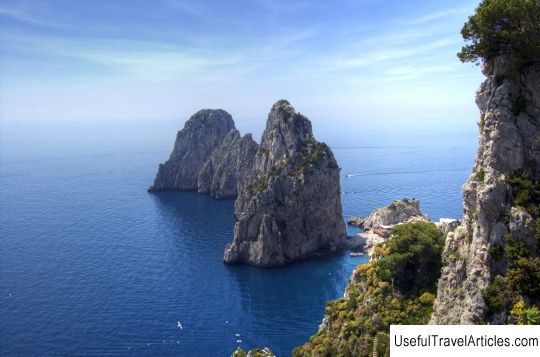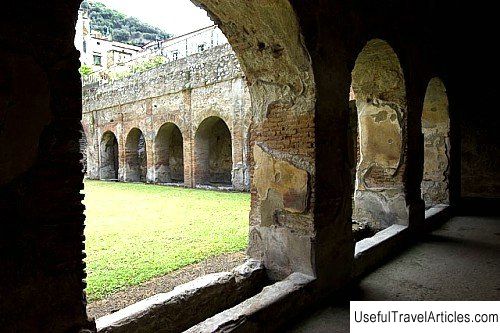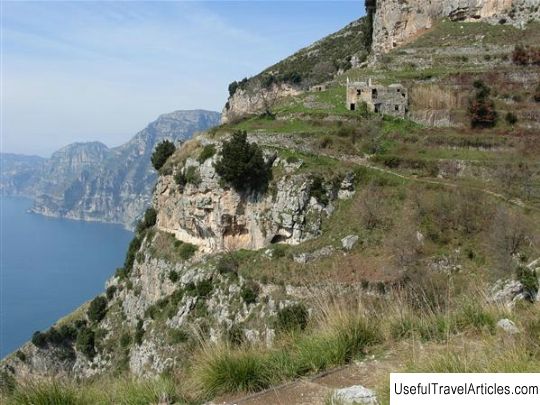Li Galli description and photos - Italy: Positano
Rating: 8,5/10 (860 votes) 
Li Galli description and photos - Italy: Positano. Detailed information about the attraction. Description, photographs and a map showing the nearest significant objects. The title in English is Li Galli. Photo and DescriptionLi Galli, also known as Le Sirenuse, is a small island archipelago located off the coast of the Amalfi Riviera between Capri and 6 km southwest of Positano. The name Sirenuza comes from the mythological sirens, which, according to legend, in ancient times lived on the islands. The archipelago consists of three main islands - the crescent-shaped Gallo Lungo, La Castelluccia, also known as Gallo dei Briganti, and the almost circular La Rotonda. Closer to the coast is the fourth island - Iska, and, finally, between Li Galli and Iska lies the rocky outcrop of Vetara. They say that in ancient times sirens lived on Li Galli, the most famous of which were the Parthenopa, Lycosia and Ligeia. One of them played the lyre, the other the flute, and the third sang. In the 1st century BC. they were mentioned by the Greek geographer Strabo. In ancient times, sirens were described as creatures with the bodies of birds and the heads of women, and in the Middle Ages they turned into mermaids. By the way, the modern name of the archipelago - Li Galli - refers to the bird forms of the bodies of sirens, as it means "hens". On the main island of the archipelago - Gallo Lungo - there was once a monastery, and later - a prison. During the reign of Charles II of Naples in the late 13th and early 14th centuries, the Amalfi Coast was very often attacked by pirates. To prevent danger, Charles ordered the construction of a watchtower on the ruins of an ancient Roman structure on Gallo Lungo. But since Karl did not have enough money for this, he accepted the offer of a certain Pasquale Celentano from Positano, who gave money for construction in exchange for a promise, that it was he who would be appointed guardian of the fortress. The tower, now called Aragonese, was built around 1312. It housed a garrison of four soldiers. For centuries, the position of tower caretaker changed hands, until the formation of the Italian Kingdom, responsibility for the buildings on Gallo Lungo passed to the municipality of Positano. And in 1919 the island was seen by Leonid Myasin, a Russian choreographer and dancer, who three years later bought it and began to turn it into a private residence. First of all, Massine restored the Aragonese Tower and made it an inn with a dance studio and an open-air theater. Unfortunately, this theater was subsequently destroyed during a storm. Also Massine, with the help of the designer Le Corbusier, built a villa on Gallo Lungo, from the bedrooms which had a wonderful view of Positano. There were also huge terraced gardens overlooking the Cape of Punta Licosa and the island of Capri. After Massine's death, the island was acquired in 1988 by another Russian dancer, Rudolf Nureyev, who spent the last years of his life here. He refurbished the villa in a Moorish style and decorated the interiors with tiles from Seville. After the death of Nureyev, in 1996 the island was bought by Giovanni Rossi, the owner of a hotel from Sorrento, who turned the villa into a hotel. As for another island, Isca, it was once bought by the screenwriter from Naples Eduardo de Filippo. Today his son owns the island. Iska has a pretty villa and a garden overlooking the cliffs.       We also recommend reading Zero kilometer sign description and photo - Belarus: Brest Topic: Li Galli description and photos - Italy: Positano. |




